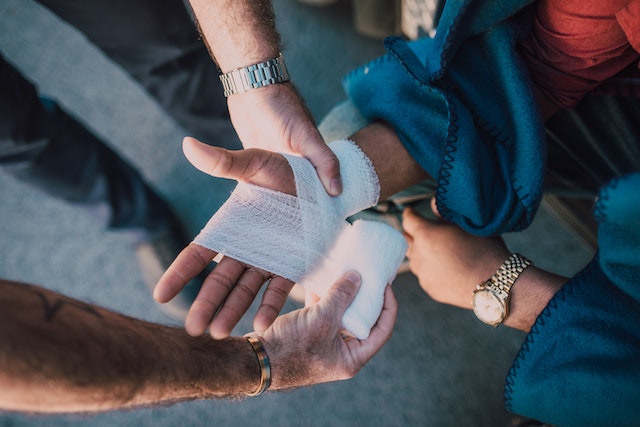Introduction: Engaging in sports and physical activities is not only fun but also beneficial for your health. However, sports injuries can occur, hindering your ability to participate and enjoy your favorite games. By taking proactive measures and adopting preventive strategies, you can significantly reduce the risk of common sports injuries. This article will guide you on how to stay in the game and avoid injuries while pursuing your athletic endeavors.
- Warm Up Properly: Before every sports session or game, it’s essential to warm up your body. Start with a few minutes of light cardio exercises, such as jogging or jumping jacks, to raise your heart rate and increase blood flow to your muscles. Follow it up with dynamic stretches that target the major muscle groups used in your sport. This helps to prepare your body for the demands of the activity and reduces the risk of muscle strains and sprains.
- Focus on Technique: Developing proper technique is crucial for injury prevention. Whether you’re throwing a ball, swinging a racket, or performing complex movements, ensure that you have a solid understanding of the correct form. Seek guidance from coaches, trainers, or experienced athletes who can provide feedback and help you refine your technique. Using the right technique minimizes unnecessary stress on your joints, muscles, and ligaments, reducing the likelihood of injuries.
- Gradually Increase Intensity and Duration: Avoid pushing yourself too hard or progressing too quickly. Gradually increase the intensity, duration, and frequency of your sports activities to allow your body to adapt and strengthen over time. Sudden spikes in training load can lead to overuse injuries and fatigue, compromising your performance and risking injury. Aim for progressive and incremental improvements while giving yourself enough time to recover between sessions.
- Include Strength and Conditioning Exercises: Engaging in regular strength and conditioning exercises is vital for injury prevention. Strengthening the muscles that support your joints helps to stabilize them and reduces the risk of strains and sprains. Focus on exercises that target specific muscle groups used in your sport, such as squats, lunges, planks, and core exercises. Additionally, incorporate exercises that improve balance, agility, and coordination to enhance overall athletic performance and reduce the likelihood of falls and collisions.
- Wear Appropriate Sports Gear: Using the right sports gear and protective equipment is essential for injury prevention. Depending on your sport, this may include helmets, shin guards, mouthguards, protective eyewear, or properly fitted shoes. Ensure that your equipment is in good condition, fits well, and meets the required safety standards. The right gear provides necessary support, cushioning, and protection, minimizing the impact of potential injuries.
- Take Rest and Recovery Seriously: Rest and recovery play a crucial role in injury prevention and overall performance. Allow your body enough time to rest and recuperate between training sessions and competitions. Schedule regular rest days to avoid overuse injuries and mental fatigue. Additionally, prioritize sleep, as it is during restorative sleep that your body repairs and rebuilds damaged tissues. Listen to your body’s signals and take breaks or modify your activities if you feel pain, fatigue, or signs of overtraining.
- Stay Hydrated and Fuel Your Body Properly: Maintaining proper hydration and nutrition is essential for optimal performance and injury prevention. Dehydration can affect your coordination, strength, and endurance, increasing the risk of injuries. Drink water before, during, and after your sports activities, even if you don’t feel thirsty. Additionally, fuel your body with a balanced diet that includes a variety of nutrients, including carbohydrates, protein, and healthy fats, to support muscle function, tissue repair, and overall energy levels.
- Pay Attention to Warning Signs: It’s important to pay attention to your body and recognize any warning signs of potential injuries. If you experience persistent pain, swelling, limited range of motion, or any unusual discomfort, consult a healthcare professional. Early intervention and proper treatment can prevent minor issues from developing into more severe injuries.
Conclusion: Preventing common sports injuries requires a proactive approach that involves proper warm-up, technique, gradual progression, and adequate rest. By implementing these strategies and incorporating them into your sports routine, you can minimize the risk of injuries and continue enjoying the activities you love. Remember to prioritize safety, listen to your body, and seek professional advice when needed. Stay in the game and keep pursuing your athletic goals with confidence.










